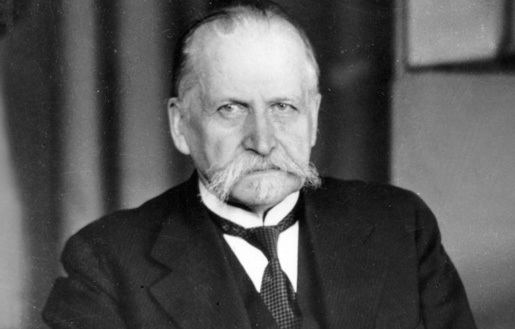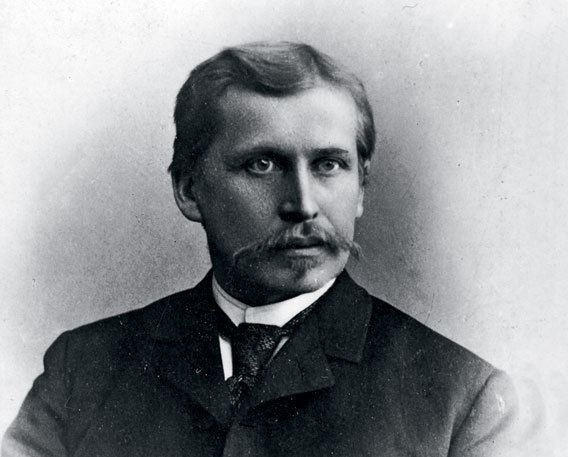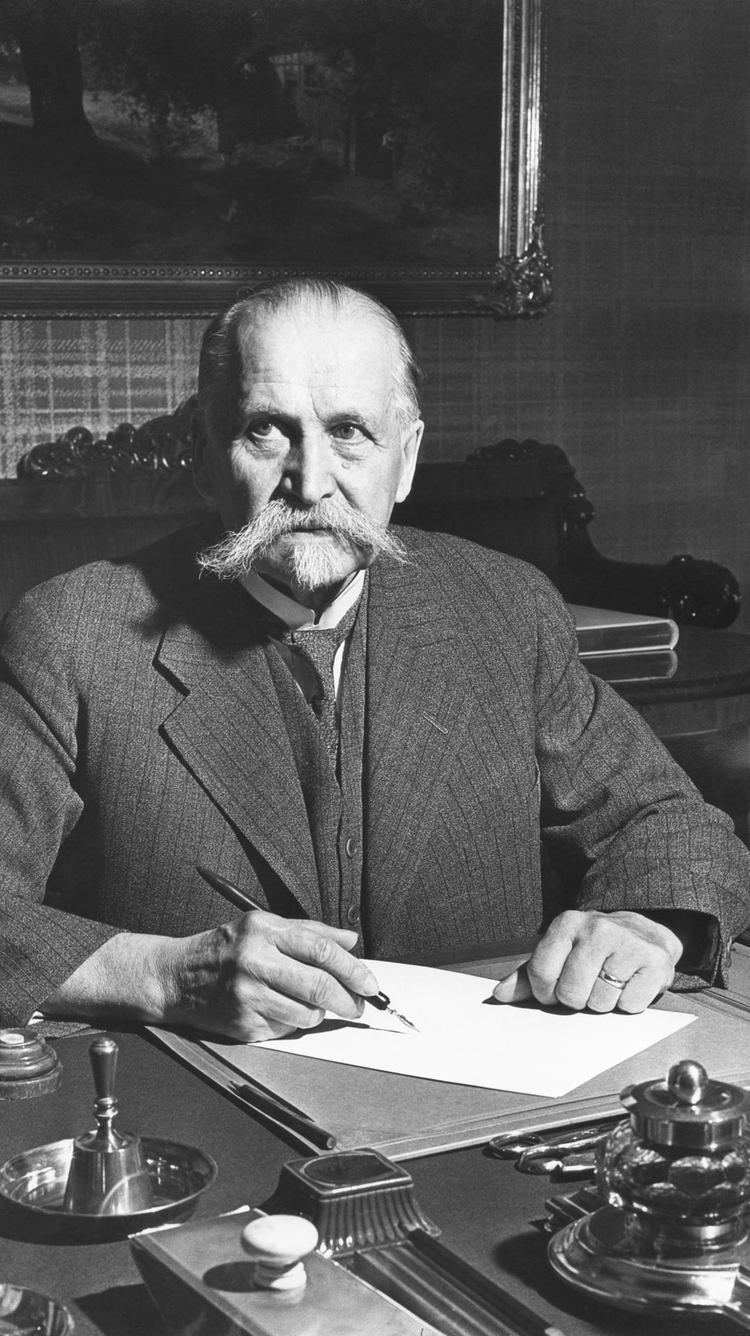Preceded by P. E. Svinhufvud Party Centre Party Succeeded by A. K. Cajander | Preceded by T. M. Kivimaki Role Political leader Name Kyosti Kallio | |
 | ||
Prime Minister A. K. CajanderRisto Ryti Presidential term March 1, 1937 – December 19, 1940 Children Kalervo Kallio, Kaino Kallio, Kerttu Kallio, Vieno Kallio, Katri Kallio, Veikko Kallio Similar People Risto Ryti, Pehr Evind Svinhufvud, Kalervo Kallio, Juho Kusti Paasikivi | ||
Ky sti kallio 03 1940
Kyösti Kallio ([kyøsti kɑlːio]; 10 April 1873 – 19 December 1940) was the fourth President of Finland (1937–1940). He was a prominent leader of the Agrarian League, and served as Prime Minister four times and Speaker of the Parliament six times.
Contents
- Ky sti kallio 03 1940
- Ky sti kallion hautajaiset 1941
- Early life
- Start of career
- Civil war
- Formation of the republic
- Supported prohibition
- Non violent anti communist
- President
- Resignation and death
- Religious views
- Cabinets
- Awards and decorations
- References

Ky sti kallion hautajaiset 1941
Early life

Kyösti Kallio, originally Gustaf Kalliokangas (forename's Swedish pronunciation: [ˈɡʉstɑːv], surname's Finnish pronunciation: [kɑlːiokɑŋːɑs]) was born in Ylivieska, Finland. His father was a farmer and a prominent local politician.
Start of career

Kallio served in the Diet of Finland 1904–1906 as a member of the Estate of the Peasantry. He joined the newly founded Agrarian Union (a farmers' party) in 1906 and became one of its prominent leaders. He became an Agrarian minister in the Senates of Oskari Tokoi, Pehr Evind Svinhufvud and Juho Kusti Paasikivi.
Civil war

During the Civil War in Finland, Kallio hid in Red-dominated Helsinki, because he was at least nominally on the White side and therefore a "class enemy"; he formed a new senate (government) in Helsinki after German troops had defeated the Reds in the city. Afterwards he became a moderate peace-maker and disapproved of retaliation against the Reds.
Formation of the republic
During the debates over the form of the new state in 1918, Kallio resigned from the Senate because he supported a republic instead of constitutional monarchy. Eventually, the monarchist stand lost and he returned to the Cabinet to become Prime Minister. He was a reformist who emphasized education, settlement, and land reform. His greatest achievement was "Lex Kallio" in 1922, legislation allowing the state to buy land to encourage new settlements, and to let the former tenant farmers and other landless rural people buy small farms (see, for example, Seppo Zetterberg et al., ed., "Suomen historian pikkujättiläinen").
Supported prohibition
He supported Prohibition in Finland, and was dismayed when it was repealed in 1932.
Non-violent anti-communist
Kallio was an anti-communist, suppressing the Finnish Communist Party (SKP) in 1923, but he resorted to legislative methods. When the violent right-wing Lapua Movement asked him to become their leader, he refused and was then instead subjected to their death threats.
President
Kallio was elected president with the votes of a centrist (Agrarian and Progressive) and social democratic coalition, which wanted to ensure that President Svinhufvud would not be re-elected. Kallio took the role of a parliamentarian president and avoided use of his personal power.

On the eve of the Winter War, when Marshal Mannerheim once again threatened to resign from his post as chairman of Finland's Defence Council due to a schism with the cabinet, Kallio convinced him to stay. During the war Kallio resisted the idea of giving up any territory to the Soviet Union, but was forced to agree to sign the Moscow Peace Treaty in 1940. His health begun to fail – his right arm was paralyzed – and he was not active in the dealings with Germany leading to the Continuation War. On 27 August Kallio suffered a serious stroke. Prime Minister Risto Ryti took over his duties. Kallio's heart became weak while he knowingly took risks by agreeing to the formal farewell ceremonies.
Resignation and death
Kallio left a notice of resignation on 27 November 1940. He was planning to leave the capital and retire to his farm at Nivala after the farewell ceremonies on the evening of 19 December 1940; but he collapsed and died that night at the Helsinki Central Railway Station in the arms of his adjutant before a guard of honor while a band played the patriotic Finnish march Porilaisten marssi.
Religious views
A significant part of Kallio's personality and a motive for the social reforms which he supported and promoted was his deep Christian faith, which he had adopted already at home, and which was deepened during his marriage to Kaisa Kallio, who was also a devout Christian. Although Kallio was often too busy to go to church, he prayed often when encountering difficulties in making political decisions, and some of these prayers he recorded in his diary. He also read Christian books with his wife and often discussed them by exchanging letters. He often referred to God in his speeches, and during the Winter War he asked the Finns who were serving their country to read the Bible. When he was forced to sign the harsh Moscow Peace Treaty in March 1940, Kallio quoted freely from the Book of Zechariah, saying: "May my hand, which is forced to sign such a paper, wither." His right arm was paralysed the following summer, and he was forced to switch his writing hand. In the Presidential Palace, shortly before leaving for Helsinki Central Railway Station for the last time, Kallio sang a hymn with his family.
